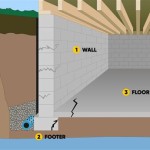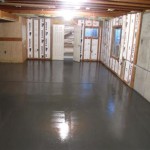Essential Aspects of the Best Waterproof Paint for Basement Walls
Protecting your basement walls from water damage is crucial for maintaining a dry and healthy living space. Waterproof paint is an effective and affordable solution that can effectively seal out moisture. However, choosing the best waterproof paint for basement walls requires careful consideration of several essential aspects.
1. Type of Paint
There are two main types of waterproof paint for basement walls: cement-based and epoxy-based. Cement-based paints are more porous and breathable, making them suitable for damp environments. Epoxy-based paints are more durable and resistant to moisture, making them ideal for areas with high humidity or water exposure.
2. Moisture Resistance
The moisture resistance of a paint is measured in hydrostatic head rating. A higher hydrostatic head rating indicates better resistance to water pressure. For basement walls, a hydrostatic head rating of at least 15 feet is recommended to withstand typical water pressure.
3. Adhesion
The adhesion of a paint determines how well it bonds to the wall surface. Good adhesion ensures that the paint will not peel or flake, even in damp or humid conditions. Look for paints with a strong adhesion strength and specifically formulated for basement walls.
4. Coverage
Coverage is an important factor to consider when choosing waterproof paint. The coverage rate indicates how much area a gallon of paint can cover. A higher coverage rate means you will need less paint to cover the same area, saving you time and money.
5. Durability
The durability of a paint refers to its ability to withstand wear and tear. Waterproof paints for basement walls should be durable enough to resist moisture damage, impact, and abrasion. Look for paints with a long lifespan and a warranty that covers water damage.
6. Application
The ease of application is important for both DIYers and professionals. Some waterproof paints require special tools or techniques to apply. Choose a paint that is easy to apply and dries quickly to minimize downtime.
7. Appearance
While waterproofing is the primary goal, you may also want to consider the appearance of the paint. Waterproof paints come in a variety of colors and textures, allowing you to match the paint to your basement's decor.
Conclusion
Choosing the best waterproof paint for basement walls requires careful consideration of type, moisture resistance, adhesion, coverage, durability, application, and appearance. By understanding these essential aspects, you can select a paint that will effectively protect your basement from water damage and enhance its aesthetics.

Kilz Basement Masonry Waterproofer

Seal Krete 1 Gal Damplock Masonry Waterproofing Paint 131001 The Home

Waterproofing Basement Walls With Drylok Paint Home Repair Tutor

Advances In Spray Applied Basement Coatings Waterproof Magazine

The Case Against Waterproof Paints Wall Coatings Why Fail What To Do Instead

Waterproof Your Basement

The Case Against Waterproof Paints Wall Coatings Why Fail What To Do Instead

The Case Against Waterproof Paints Wall Coatings Why Fail What To Do Instead

Ames Block And Wall 1 Gal Liquid Rubber Waterproof Sealant Bwrf1 The Home

Waterproof Or Waterproofing Paint For Basement Walls
See Also








